

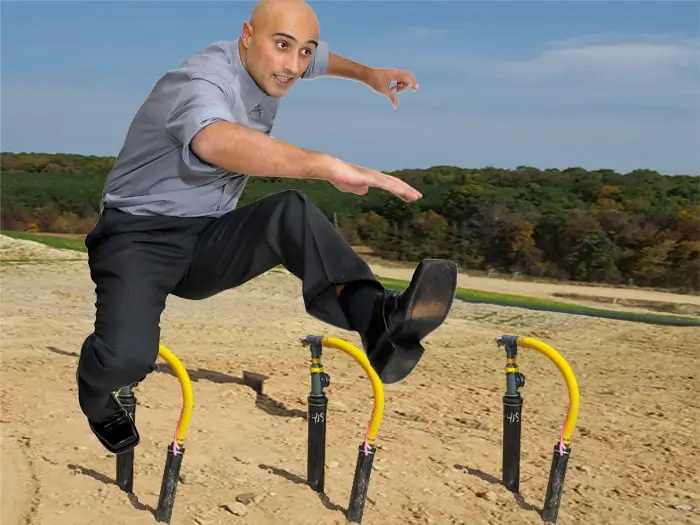
The promulgation of 40 CFR 62 Subpart OOO (EG plan), effective since June 21, 2021, impacted all MSW landfills operated under NSPS subpart WWW. One of the major changes of this rule is the requirement to monitor all cover penetrations during quarterly methane surface emission monitoring (SEM). All components that are part of the landfill gas collection system and any other object that completely passes through the landfill cover are considered cover penetrations.
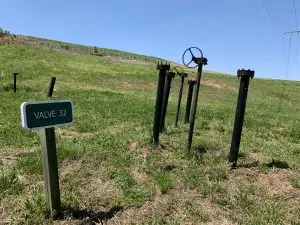
As landfill and landfill gas practitioners, we suggest that advanced planning can save you time and effort. As landfills face short 10-day correction periods, coupled with supply chain and labor shortages, planning can make operations and compliance more efficient. We present a few scenarios and suggestions here.
You’ll need to record any reading greater than 500 ppm above background as an exceedance location during monitoring. These require taking corrective actions such as cover maintenance or landfill gas wellfield adjustments, along with monitoring the exceedant locations again within 10-days of your initial monitoring. If 10-day monitoring still shows methane concentrations greater than 500 ppm, you’ll need additional corrective actions and to monitor the location once more within 10-days of the second exceedance.
Once the location(s) shows methane concentrations less than 500 ppm, it is mandatory to monitor these locations again one month from the very first reading showing the exceedance. If a location shows methane concentration greater than 500 ppm for three occasions in one quarter, the addition of a collection device, other improvements to the collection system, or a request for an alternative remedy and timeline is required. Therefore, implementing appropriate corrective action within the specified timeframe is critical to avoid expensive GCCS expansions or NOVs.
Gas well, well boots, leachate risers, below and above-grade pipe transition, condensate sumps, and valve vaults are some of the common exceedant penetration locations. Implementing corrective action at these penetrations within the given timeframe is a challenging ordeal for landfill operators. Corrective action can vary depending upon several factors: the methane concentration observed during initial monitoring, the location of the penetration, cover type (geomembrane capped vs. soil capped), material availability, and resources available to perform the work.
Corrective actions have varying material and effort requirements; one solution cannot fit all challenges. The most common corrective actions include applying expanding foam, soil mounding, excavation, clean dirt fill or bentonite fill, well boot repairs, installing a prefabricated well boot seal, and installing a vacuum line for emission control. We recommend before starting your monitoring operators consider the following factors:
Develop an educated estimate for the number of expected exceedant penetrations from the landfill sections that historically show cover exceedances or are in areas with problematic operating conditions. Using the readings and data collected over time makes identifying these areas much easier.
Decide the type of corrective action to implement based on your cover type in those expected exceedance locations.
Procure corrective action materials such as bentonite, geomembrane for boot fabrication matching permitted cap material, or prefabricated seals before you need them.
Check the availability of contractors for liner or well boot repairs, and their response time, before you need them.
Surface emissions vary based on the operating conditions; therefore, it is common to see a variable number of exceedances from one quarterly monitoring event to the next. At one of our sites that had no surface exceedances observed during the previous quarterly SEM event, multiple penetrations observed methane concentration greater than 500 ppm during the following quarterly event. One section of the landfill with a soil cap observed methane concentrations up to 16,000 ppm. The geomembrane capped section observed penetration concentrations of up to 8,000 ppm methane. We implemented various corrective actions to bring these exceedant locations to compliance.
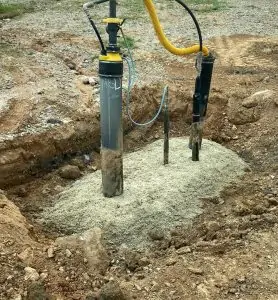
In the soil-capped section, we implemented bentonite plugs, prefabricated seals, and site fabricated geomembrane seals depending upon the observed methane concentration, exceedant location, and material availability. Pre-planning and procuring material ahead of time proved to be very helpful.
For each of these corrective actions, we opened an area about 2-ft deep and 10-ft x 10-ft. For bentonite corrective action, about a 9-inch thick bentonite slurry was filled, extending about 5-ft on each side of penetration and then filled with clean dirt.
Prefabricated seals that come in standard sizes as a slip-on for penetrations and site-fabricated geomembrane seals also covered at least a 5-ft x 5-ft area around each penetration. The sleeves at each penetration were left at least 6-inch over the ground surface after filling the excavated section with clean dirt.
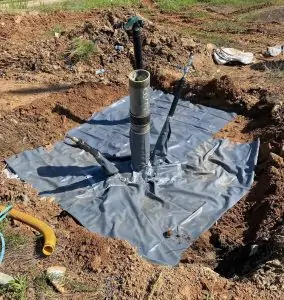
In the geomembrane-capped section, we choose to use well boot repairs using geomembrane. Our task was to identify the type of geomembrane used in the cap, procure the geomembrane, identify and schedule the contractor, and install well boots in each exceeding penetration location within the 10-day timeframe. After the well boot fabrication and installation, we needed to carefully reconnect the existing drainage layer.
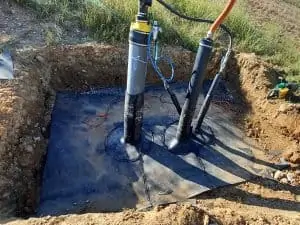
Implementing these corrective actions can get expensive; prefabricated seals can cost up to $300 per penetration, excluding installation. Material and contractor’s availabilities are also a significant challenge. While implementing these corrective actions, additional unforeseen challenges can arise as well. Planning ahead and having the material on site is very important for landfill operators to keep the landfill under compliance.
About the Authors:
Shrawan Singh, Ph.D., PE, is a Senior Project Professional. Stephen Descher is a Senior Project Professional. You can reach both at SCS Engineers.